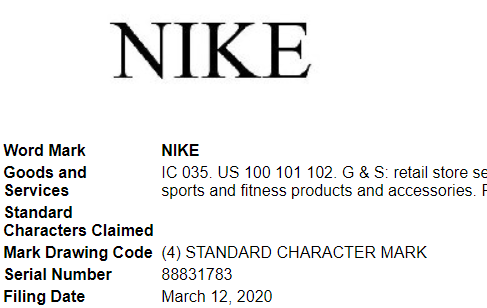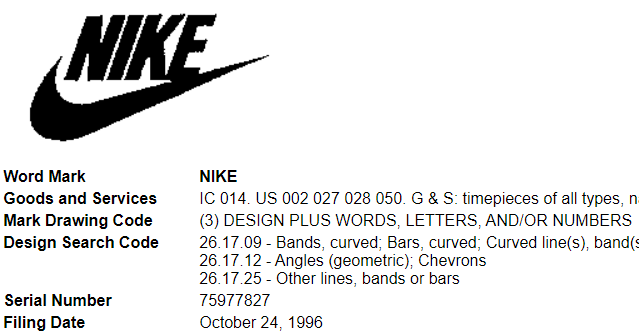What are the Differences Between Standard Character Marks and Design Marks?
When submitting a trademark application for your business, it is important to decide whether to submit a Standard Character Trademark (aka Word Mark), or should you register to trademark a logo or design mark. Clients regularly ask which of these they should apply for to get the best protection for their brand.
- When registering a trademark, the value and broadest protection is with a Standard Character Trademark
- People say words, they type words into search engines, they fight over brand names. (Standard Character Mark)
- People do not speak logos, and you can’t search for a business by its design mark (logo). (Design Mark)
Usually, I advise that first you register the mark as a standard character trademark, if possible. Standard Character marks cover the word(s) and provide the broadest form of protection compared to design or logo versions of your trademark. Standard Character Marks cover (provide protection for) the words shown in a stylized design mark or logo – no matter how it looks. Any design or logo that contains the registered word(s) is protected by a standard character mark. You can use any design / logo to show proof of use to the Trademark Office, as long as it contains the registered name / words.
On the other hand, design marks, or logo trademarks, often change over time. A registration for a design mark or logo only covers the particular design submitted. Consider, for example, when the owner changes the look of a logo. If significant changes are made, the new logo version must be registered. It is possible that the old logo trademark registration will not cover the new logo. Also, the trademark office may not renew the logo registration if the design has changed. If you had a Standard Character trademark registration, changes in logo design would be covered.
What we mean by “covered” is that, when submitting the specimen of use, any logo or design mark that includes the words will be accepted as proof of use. Proof of use is required for all US based trademark applications. If you filed an intent to use trademark application, proof of use will be required after the Notice of Allowance.
Proof of use is also required when renewing trademark applications for design marks and standard character marks. The Section 8 and Section 15 declarations are due 6 years after the trademark is registered. The declarations require proof of use. So, if you registered a Standard Character mark, any design mark that includes the words will be accepted as a specimen of use. However, if you registered a design mark, and your design mark (logo) changed over the years, it will not be acceptable as a specimen of use for the renewal. This happens often, as owners tweak their design marks over time.
Similarly, at 10 years after the registration date, a Section 8 and 9 renewal filing is required. The combined Section 8 & 9 trademark renewal filing requires proof of use. The TM office will compare the specimen of use of the design mark with original registration, if they don’t match, the renewal application will be rejected. If you registered a Standard Character mark, any design mark that includes the words will be accepted as a specimen of use.
What is a Standard Character Mark?
A Standard Character Mark (also known as a word mark) is used to register words, letters, numbers or any combination thereof. However, it does not lay claim to any particular font style, size, color or design element. In other words, a single word mark protects the name or phrase regardless of how the words are displayed.
As long as the spelling is consistent, a word mark will protect a name or phrase even if the design changes over time. For this reason, applying for a word mark can often provide long-term flexibility with your brand.


What is a Design Mark?
A design mark is used to register a stylized logo, design element, graphic, or image. This could protect your brand name if you plan to use a specific color, font style, or size for your logo. These are referred to as Special Form Drawings on the USPTO website.
Design marks are often much more specific than word marks. A design mark will only protect the exact design that it was filed for. As a consequence of that, even slight changes to a logo over time could warrant filing a new trademark.
For example, if you filed for a colored design mark with a blue logo and later changed it to be red, it would no longer be protected by the design mark. Even if the color change was the only difference, it would no longer be consistent with the original mark.
Also, you have Common Law Trademark Rights in the logo, which you can enforce in federal court if someone were to use it for similar services.
Finally, you likely have Copyright In The Artwork. Therefore, if someone copies the logo, you can assert you copyright against the infringer.
Do I register the words, the artwork/logo, or both?
I usually do not advise trademarking the logo when you can register the words as a standard character mark. The words are the most important – they cover the words no matter how they are used on any logo. If you can justify additional expense, we can file for the logo, but usually I do not advise. Logos tend to change over time. Every time it changes, you need to file a new application. Also, you have common law trademark rights in the logo, which you can enforce in federal court if someone were to use it for similar services. Finally, you likely have copyright in the artwork. Therefore, if someone copies the logo, you can assert you copyright against the infringer.
What are the requirements for a Standard Character Mark?
An applicant may submit a standard character drawing if:
- The mark does not include a design element;
- All letters and words in the mark are depicted in Latin characters;
- All numerals in the mark are depicted in Roman or Arabic numerals;
- The mark includes only common punctuation or diacritical marks; and
- No stylization of lettering and/or numbers is claimed in the mark.
The USPTO has created a standard character set that lists letters, numerals, punctuation marks, and diacritical marks that may be used in a standard character drawing. The standard character set is available on the USPTO website.
If the applicant has claimed standard character format and the drawing includes elements that are not in the set, then the examining attorney must treat the drawing as a special form drawing, ensure that the mark drawing code is changed, and require the applicant to delete the standard character claim.
An applicant who submits a standard character drawing must also submit the following standard character claim:
The mark consists of standard characters without claim to any particular font style, size, or color.
This statement will appear in the Official Gazette and on the certificate of registration.
About Trademark Attorney Charles Riddle
Trademark Attorney Charles Riddle has over 20 years experience in trademark law. He began practicing with trademark lawyers as a clerk in law school in 1999. He litigated against companies like Toyota and The Ritz Hotel Paris in trademark matters early in his career. The focus of our practice is mainly on registration of trade marks and trademarking logos, copyrights for logos and other works of authorship.
